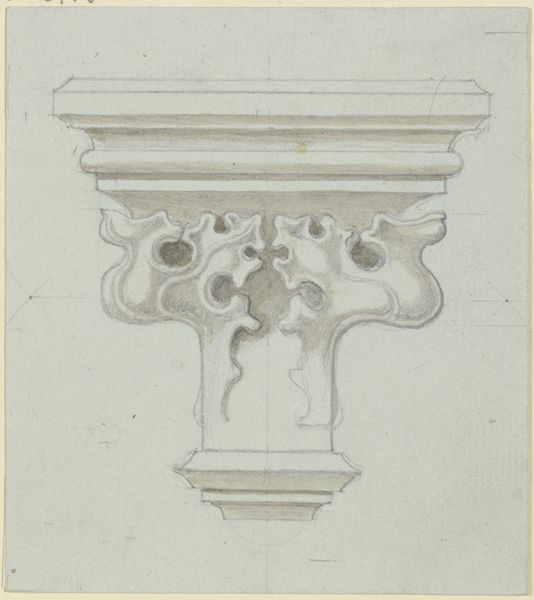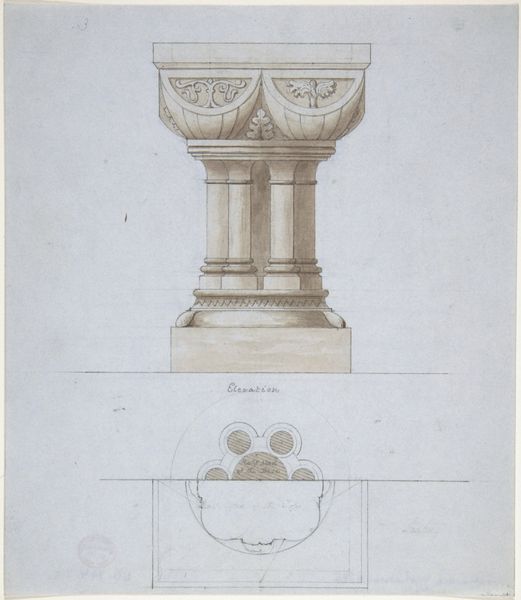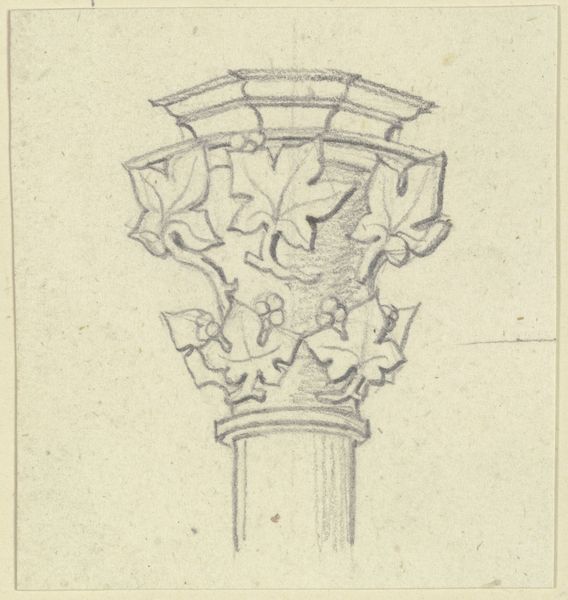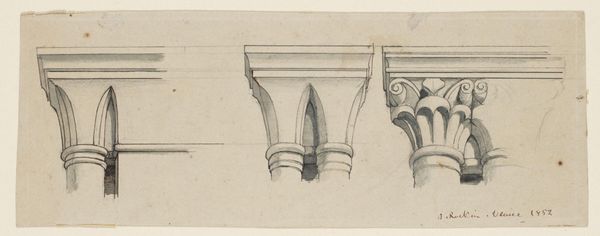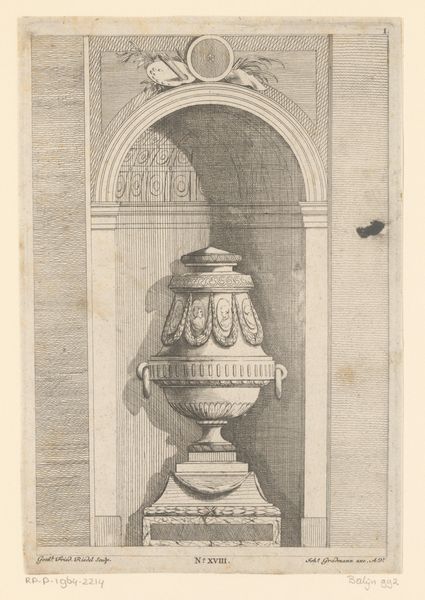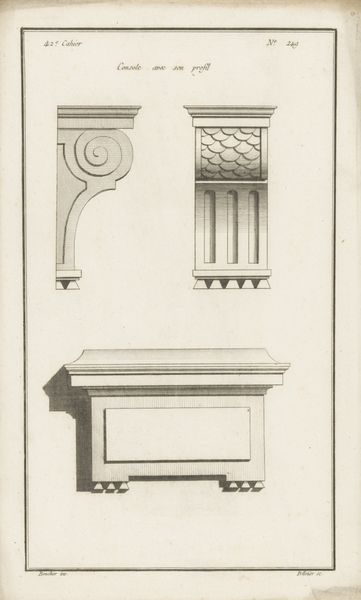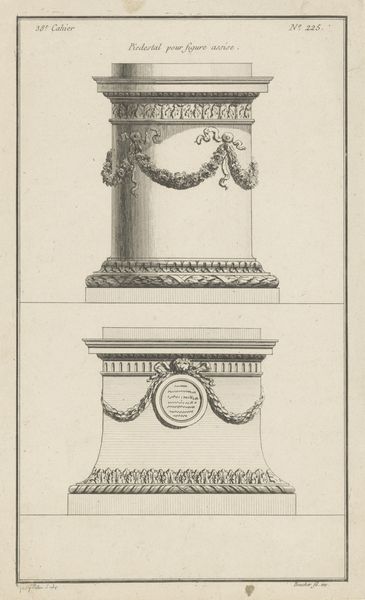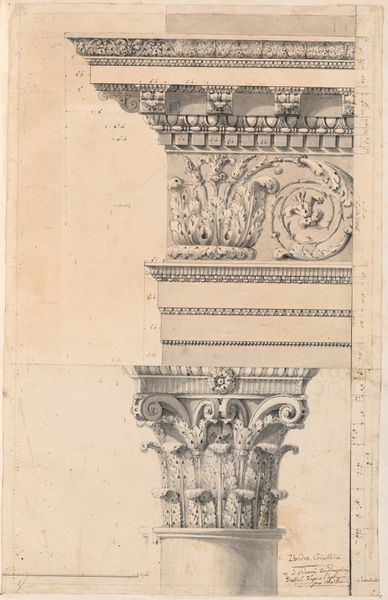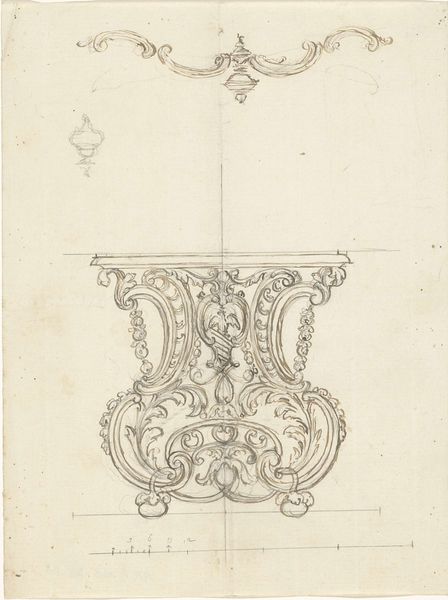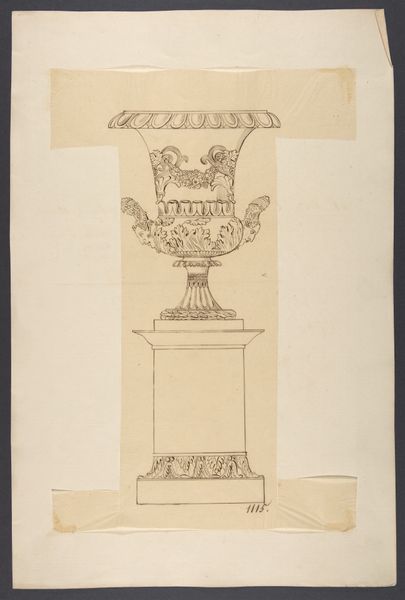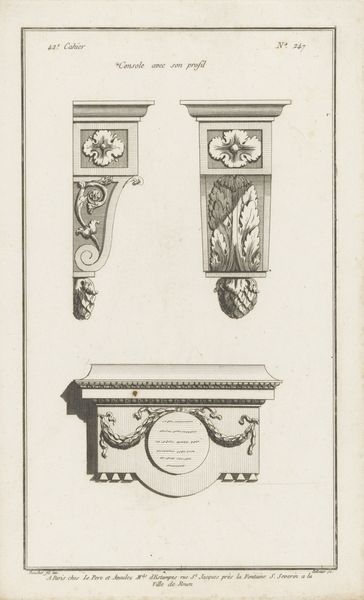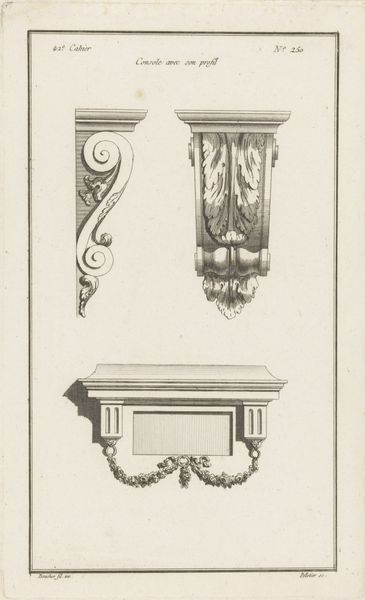
drawing, ink, pencil, graphite, architecture
#
drawing
#
classical-realism
#
form
#
ink
#
pencil
#
graphite
#
architecture
Copyright: Public Domain
Curator: Let’s discuss this captivating study: "Gotisches Kapitellchen mit Krabben" or, "Gothic Capital with Crocket," by Karl Ballenberger, currently residing here at the Städel Museum. The work uses graphite, ink, and pencil. Editor: My initial reaction? It feels austere, yet delicate. The greyscale rendering gives it an almost ethereal quality, a fragment of a dream of a forgotten architecture. Curator: Indeed. Look at the architectural draftsmanship on display here. Notice the layering and line work defining form and shadow; Ballenberger is clearly invested in revealing the geometrical essence beneath the decorative flourish. How do you read the lines? Editor: They’re like the ghost of intentions—construction lines sitting next to bold assertions. There's the definite form, but also the evidence of finding that form, of arriving at it. We’re not just seeing the capital; we’re seeing its becoming. Considering the date—or lack thereof—do you believe this to be academic in intention? A study or practice in realism? Curator: Undoubtedly an exercise, but more than mere imitation. Ballenberger seems less interested in historical recreation, and more driven to parse the abstractable visual forms: volume, shape, the very structure that creates that sense of Gothic grandeur. It almost feels like he's reverse-engineering the artistic process that creates historical feeling, right? Editor: Precisely! And let's consider how architectural representations served as political tools. The Gothic style, frequently adopted in civic structures, embodied more than aesthetics. Drawings such as this provided accessible images, thereby enabling civic society to be enfolded in the values associated with these structures. The image here isn't just representational; it’s civic engagement at its finest. Curator: That is a potent reminder. Seeing the lines anew with your interpretation, I must confess that I hadn’t given sufficient credit to the silent cultural resonance captured through Ballenberger's focus. Editor: And on my side, this discussion reinforces that without seeing an artwork's internal structure—like the one displayed here, an echo of history—we risk losing an appreciation of historical context.
Comments
No comments
Be the first to comment and join the conversation on the ultimate creative platform.
